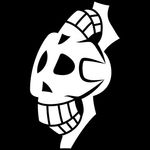- Home
- Photoshop ecosystem
- Discussions
- Re: How do I detour a scanned piece of torn paper
- Re: How do I detour a scanned piece of torn paper
How do I detour a scanned piece of torn paper
Copy link to clipboard
Copied
How do I detour a scanned piece of torn paper, without losing the torn effect, for high quality print 300 dpi ?
What tools do I use? I can only find info on how to make a torn effect, but in this case I need to save the real torn paper
Explore related tutorials & articles
Copy link to clipboard
Copied
Please post (a section) of the image in question.
So far we cannot tell against which background you scanned the paper for example.
Copy link to clipboard
Copied

Copy link to clipboard
Copied
That offers so little contrast that I would recommend you scan the object again with a black background.
Copy link to clipboard
Copied
Thank you for your reply. But then, when scanned with a black background: what tools would you suggest? How can I make sure when printed (for a book!) there will not be any 'fuzzy' borders/edges, and the 'torn' effect will not be lost eighter?
Copy link to clipboard
Copied
I would recommend using a Channel-approach – looking for the Channel with the best separation of paper/background and using that as the basis of a Layer Mask.
Then decontaminate the edge pixels .
Against which background/color do you intend to set the image?
Copy link to clipboard
Copied
a colorfull background, sort of old wallpaper
decontaminate? sorry, don't understand and google translate doesn't help
Copy link to clipboard
Copied
As concerns »decontaminate«:
In digital photography one has to expect that the pixels on the very »edge« of an object are not clearly fore- or background even if the image is in focus, so when clipping an object it may be necessary to address the color/brightness-changes caused by the original background on the edge pixels.
But this also depends on the intended new background.
Copy link to clipboard
Copied
If, for some reason, you must use the existing scan, this is an option:

A, Make a duplicate layer. Change the Mode to Lab Color
B, Make a duplicate of the b channel and click on Auto. The result will be Fig 2
C. Return to RGB. Use Curves to increase contrast and paint black area as a solid Fig 3
D. Use Curves to make the gray area while. Fig 4
E. Paint white area as solid Fig 5
F. Place a blank layer below the duped image and Fill with Black.
G.Return to the duplicate image and then use Fig 5 as a mask. Invert the mask.
Edit: In Step F, you can fill with a gray, a color and/or a pattern or texture
Copy link to clipboard
Copied
wow thank you so much, got it. One more question, if you don't mind: Is a simple print on an office printer reliable to check the result? If not, what about the blueprint?
Copy link to clipboard
Copied
There are too many variables involved to give you an definite answer. Your computer settings plus the specific printer brand, model and settings all affect the reliability of the result. One thing is certain: a blueprint is inadequate.
Copy link to clipboard
Copied
ok, so, actually, it would be a far better solution if I could make a scan on the background we will use, not needing to detour anything
Copy link to clipboard
Copied
Yes. Consider it this way: Photoshop has two primary functions: image enhancement and image salvage. The less you must resort to image salvage, the better. Good luck.
Copy link to clipboard
Copied
hi again, so sorry but I tried to do what you suggested and to start with I don't know what you refer to with B. (...) click on Auto. Or is it about selecting the image...? it did'n t work, it doesn't "see" the torn paper and the selection chooses the drawing instead.
I was thinking, why not use the clever selection tool (not automated but me drawing alongside the torn paper) on the duplicated layer en cut off all that is selected? Maybe with extra contrast to make sure the tool get's close to the 'edge'? Then save it as png.
Why should I make a mask?
Or why not use the lasso?
many thanks for your input and time!
greetz, nadia
Copy link to clipboard
Copied
When you change the Image > Mode to Lab Color and choose Channels you will see the b channel shown below.
When you make a duplicate of the b channel the Channels will look like the one you see below
When you choose Curves you will the bottom image below. Note: Channel b. Click on Auto to get the result shown in Fig 2 of my original post.

If you believe you can make a more accurate mask using Selection tools. Yes, try them. Good luck
If my method solves your problem, mark it Correct.
Copy link to clipboard
Copied

Copy link to clipboard
Copied
I am trying to do exactly what you say. At this point it looks like a very rough selection, like the pixels blew up, don't know how to describe it well
Copy link to clipboard
Copied
I am trying to do exactly what you say. At this point it looks like a very rough selection, like the pixels blew up, don't know how to describe it well
Copy link to clipboard
Copied
Good job. It looks like the Fig 2 of my original post. The next steps require working with Curves to increase the contrast to create the solid black area shown in Fig 3. Use a brush to fill in any internal parts of the black area. Do not paint to the edge of the black. When it is solid black, use Curves to create the white segment as shown in Fig 4 and Fig 5.
Nadia, this my be too advanced for you to try at this time. As indicated in your Post #11 and my response, a rescan on an appropriate background would be faster. easier and more accurate. Also, regarding other Selection tools and accuracy: the subtle difference in tone between torn paper and background present challenges that are better handled by a Channel Mask.
Copy link to clipboard
Copied
I will try to obtain a background (vintage wallpaper), put the pieces torn paper with illustrations on it and I will make a new scan, this way I do not need to attempt this job. I will remember from now on the use of a channel mask. Thank you very very much for all the efforts!
Find more inspiration, events, and resources on the new Adobe Community
Explore Now
